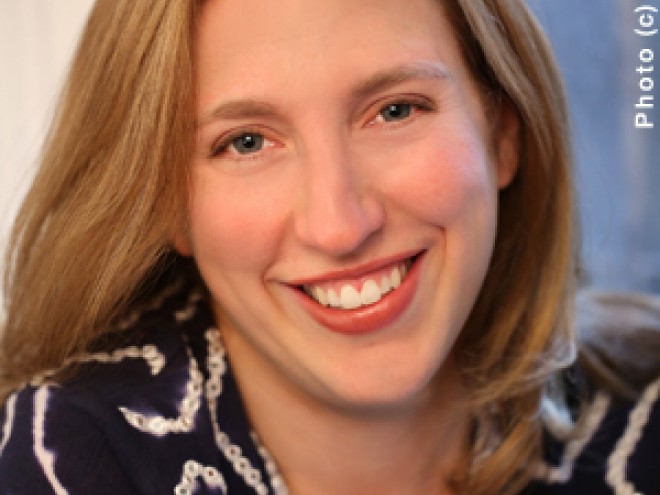A Guide for the Perplexed is the title of a major theological work written by the Rambam, Rabbi Moshe ben Maimon, in the twelfth century. The Rambam’s struggle with destiny versus free will is a theme of this historical novel, along with Solomon Schechter’s discovery of the Cairo Geniza. Horn delves into a host of interesting topics — sibling relationships, social media, the Arab Spring, divine providence, asthma, arrogance, divine providence, and more. There are also many biblical references. The novel switches between telling about the Rambam and his brother David, to Schechter and his dealings with the twin Victorian adventurers Agnes Smith and Margaret Lewis, and to Judith and Josie, fictional sisters who endure a difficult relationship.
It’s fascinating to read about the Rambam’s role as chief physician to the sultan Saladin. In seeking a cure for his royal patient ‘s asthma, the Rambam sends his merchant brother on a dangerous voyage to procure a special plant. Horn colorfully describes Schechter’s quest from Cambridge to obtain entrée to the Geniza through shady dealings with the Grand Rabbi of Cairo. Josie is a computer genius whose Genizah software is a cutting-edge marvel and the cause of her invitation to Egypt to consult at Alexandria’s modern library. I heartily recommend Dara Horm’s enjoyable, intellectual new creation, which covers so many topics of interest and connects three different periods in Egypt’s history – twelfth century, late nineteenth century, and modern day.
Interview
Speaking with Dara Horn on the phone felt like conversing with one of my brightest, most enthusiastic friends. Since I was the first person to interview her regarding her new book, I was her “sounding board” as she excitedly discussed A Guide for the Perplexed. She will travel the country during Jewish Book Month for JBC.
Miriam Bradman Abrahams: How did you come up with the idea for your new book?
Dara Horn: I had been asked to write fiction inspired by a specific abstract artwork for an exhibit at Yeshiva University Museum which showed contemporary art inspired by the book of Genesis. I wrote a piece called “How Did It Begin” about two sisters who destroy each other, taking my ideas about family and personal identity from the story of Joseph.
MBA: There are references in the book not only to the stories of Joseph being thrown into the pit by his brothers and sold into slavery in Egypt, but also to Tamar’s seduction of Judah in order to maintain the family, and Rachel and Leah’s sibling rivalry. You have also woven episodes from the lives of historical figures in this contemporary fiction. The dynamics in the relationships of the Rambam with his brother David, Solomon Schechter with his twin brother, Srulik, the twin Victorian adventurers Agnes Smith and Margaret Lewis, live alongside the invented modern day sisters Josie and Judith. Why are there so many sisters and brothers in the novel?
DH: I have always been interested in sibling relationships, both biblical and personal. I think siblings share a past but not a future. However, the past shared is so different based on individual memory. For example, Schechter and his brother make life decisions based on their different interpretations of their father’s insightful advice. Josie and Judith remember opposing experiences growing up with their mother. By the way, my own sibling relationships have been wonderful!
The novel also came out of my interest in the Genizah, the repository of hundreds of thousands of stored documents written in Hebrew from 870‑1880. I had the opportunity to view some of them during the year I studied in Cambridge and was especially interested in documents which inadvertently recorded the daily existence of the people of Fustat. I have kept journals since I was a child and am fascinated with the idea of recording and preserving things.
MBA: A key concept in your book is hinted at by the title, A Guide for the Perplexed, a major theological work by the Rambam, Rabbi Moshe ben Maimon, written in the twelfth century. How is this work reflected in your book?
DH: The Rambam struggled with the paradox of destiny versus free will. My fictional protagonist, Josie, thinks she controls every aspect of her life, until she is kidnapped and taken hostage.
MBA: Arrogance is also a major theme in your book; most of your characters have quite a bit of it. Though it seems to be a negative trait as compared with humility, it is what drives many effective people to succeed in their quests.
DH: Today, we are in danger of thinking we know everything because we can Google anything anytime. The bible shows us that Joseph was arrogant in his dealings with his brothers. And the Rambam, believing he could find a cure for asthma, sent his brother off on a dangerous voyage. In my novel, Schechter heads off from Cambridge to Fustat in 1897 with little preparation, to find and recover the Cairo Genizah. These people all have brilliant minds and their unwitting arrogance and drive are necessary to push ahead.
I was also heavily influenced by the explosion of social media, especially the ubiquitous use of smart phones. Suddenly everything is on record and there is a denial of opportunity to shape one’s own story. Cameras are everywhere, recording everything. Of course, “fakebook“ing exists alongside “facebook“ing. In my novel, Josie’s “Genizah” software brings the past back to life, as when a dead child’s digitally recorded history brings comfort to his grieving mother. However, recovering the past has happened before; the Cairo Genizah included ancient letters, receipts, children’s writings, legal documents, lists, and holy texts. These were discarded in an attic space in the synagogue. So much was stored that some was subjectively considered to be garbage and abandoned by discoverers. Schechter brought out sacks of the contents in 1897, ignoring the printed materials. Schechter wrote about these discoveries, and many books discuss the findings, including the recent Sacred Trash and another one named Sacred Treasure. These came out too late for my research, but I recommend them, along with Sisters of Sinai, about the twin Victorian scholars.
MBA: You say that yours is one of the first American novels concerning the Arab Spring.
DH: Yes. In fact I had to alter details in the plot to reflect the upheaval caused by the people’s revolution. I was in Egypt fifteen years ago, when the ultramodern Alexandria library was being built, looking like an alien spaceship in the desert. The entire internet archive backup is located in Alexandria, which is interesting because Egypt has a culture of preserving the past. I write about the City of the Dead in the book, a slum filled with people living next to the tombs of ancient residents.
MBA: Three main characters have asthma and three of your children do as well.
DH: We think we’re on the cutting edge of science today and that people in the past were superstitious idiots, but it’s quite the opposite. Hippocrates wrote about this disease and still there is no cure. In my story, the Rambam was searching for ephedra, which is related to the Sudafed we use today.
MBA: You recently discovered that you have always experienced synesthesia and imagined that everyone else did as well.
DH: This phenomenon involves a crossover of the senses, like seeing a smell or hearing a color. I associate my books with colors that are unrelated to the cover art.
MBA: A Guide for the Perplexed took about two and a half years to complete. What are you working on now?
DH: I’m writing short articles for The New York Times, The Wall Street Journal and The New York Times Book Review. I write while my children are in school. I am collecting ideas all the time and am starting to think about my next book. I don’t know what I’m doing with my characters until I write about them, I live with my characters like imaginary friends.
MBA: What are you reading for pleasure these days?
DH: The Worlds of Sholem Aleichem: The Remarkable Life and Afterlife of the Man who Created Tevye by Jeremy Dauber, In the Courtyard of the Kabbalist by Ruchama King Feuerman, and We Are All Completely Beside Ourselves by Karen Fowler.
Reprinted from by Dara Horn. Copyright © 2013 by Dara Horn. With permission of the publisher, W. W. Norton & Company, Inc. All rights reserved.
Miriam Bradman Abrahams, mom, grandmom, avid reader, sometime writer, born in Havana, raised in Brooklyn, residing in Long Beach on Long Island. Longtime former One Region One Book chair and JBC liaison for Nassau Hadassah, currently presenting Incident at San Miguel with author AJ Sidransky who wrote the historical fiction based on her Cuban Jewish refugee family’s experiences during the revolution. Fluent in Spanish and Hebrew, certified hatha yoga instructor.





